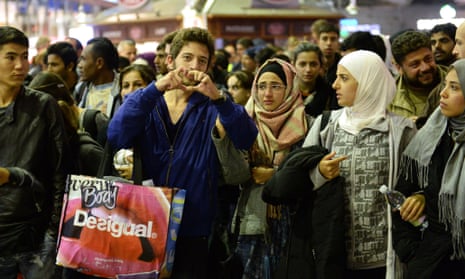European ministers have forced through a deal to relocate 120, 000 refugees across countries in the EU. Four countries - Czech Republic, Hungary, Romania and Slovakia - all voted against a mandatory quota.
Britain has refused to take part in the scheme, having separately promised to resettle 4,000 refugees this year and 20,000 over five years. The first refugees arrived from camps on the border with Syria on Tuesday.
Until now, the main response from European states to thousands of refugees trying to reach the continent has been to implement border controls. Germany, Austria and Slovakia have suspended the EU’s borderless Schengen zone with the introduction of checks on parts of their borders. Hungary has built a razor-wire fence on its border with Serbia, which it plans to extend to Romania and Croatia. Croatia has closed all but one of its border crossings with Serbia.
Countries such as Jordan, Lebanon, Iraq and Turkey have been hosting Syrian refugees since the Syrian conflict began five years ago.
As Europe’s home affairs and interior ministers have agreed a relocation plan in principle, the attention will switch focus to who’s going where. Successful integration of refugees into host countries will now be key – and it is this we would like you to help us document.
Whether you’re a refugee from Syria or elsewhere, or living in a place where refugees are being moved to: what does successful integration look like?
One reader, Inge has shared her story about how a grassroots organisation in Denmark has helped break down barriers betweeen the local community and Syrian refugees.
Venligboerne (Friendly citizens) was established in the small Danish town of Hjørring in North Denmark in November 2014 by Merete Bonde Pilgaard. Last November a sub group, Venligboerne-flygtningehjælp (refugee help) was created in response to the influx of 500 refugees at a camping site called Hyttebyen in the town of Hjørring.
Merete found that local people were alarmed by the refugees and many of them expressed fear. She gathered a small group of volunteers who wanted to welcome the new inhabitants and started a new Facebook group which both refugees and Danes could join and make contact with each other.
There were several get-togethers over the Christmas period where a group of resourceful Danes and refugees established close connections. In January the small seaside town where I live threw open its doors to 125 refugees, where the town cooked a slap-up meal and arranged activities for the refugees.Shortly afterwards, the Syrian refugees organized a banquet for the Danes and other refugees, which was followed by an event organized by the Eritreans. This generosity and reciprocity has characterized the group from the start, with kindness reciprocated in any way possible, despite the limited resources of the refugees living here.
Since then Venligboerne-flygntingehjælp (Refugee help) has become a grassroots movement, with more than 9,000 members all over Denmark and in many countries in Europe.
Tell us where you’ve come from, where you’re now living and what your experience has been so far. What integration initiatives work best? We’re interested in experiences from both refugees and host communities in the recent past, as well as the present. We’d also like to hear from people working with refugees.
You can share your experiences via GuardianWitness – all published contributions will be public or if you’d prefer to share anonymously please fill in the form below.
We’ll feature some of your experiences in our reporting.
